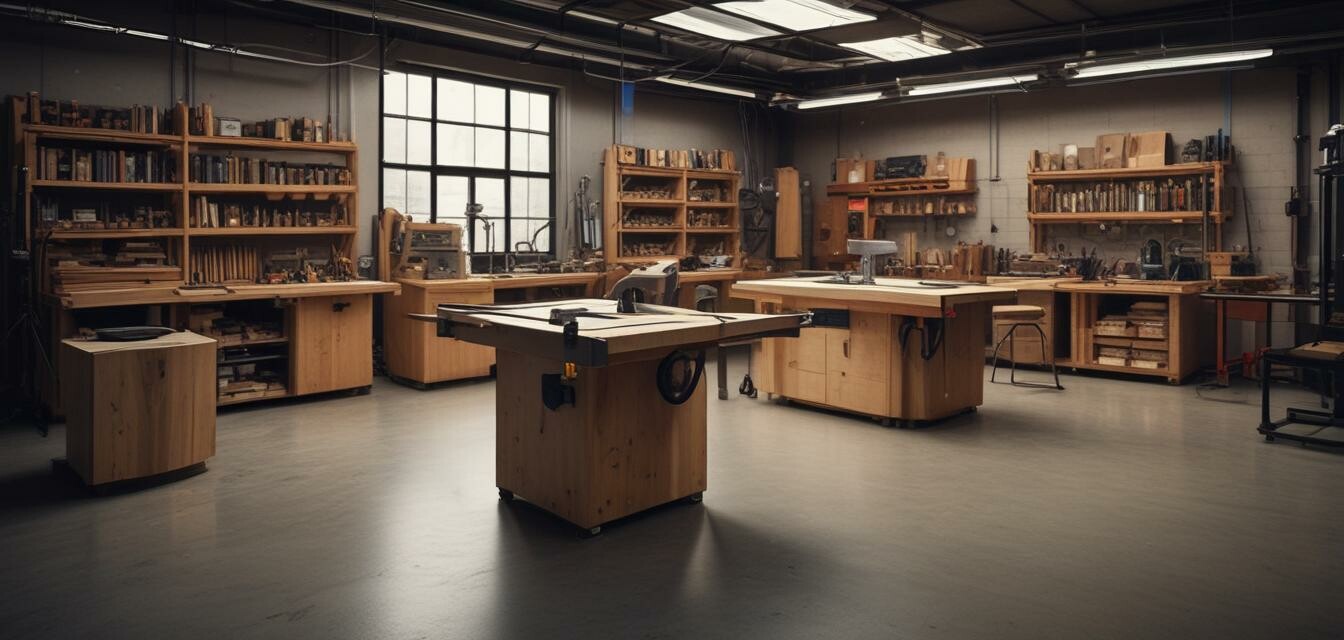
Understanding the Rise of Smart Woodworking Tools
- Smart woodworking tools enhance safety and precision.
- Integration of apps allows for better control and monitoring.
- Emerging technologies include CNC machines and IoT devices.
- The rise of eco-friendly, tech-savvy woodcraft environments.
- Staying updated with trends can improve project outcomes.
The woodworking landscape is constantly evolving, and one of the most significant shifts we've seen in recent years is the rise of smart woodworking tools. These modern tools offer a blend of practical functionality and advanced technology, providing woodworkers with unparalleled precision and safety features. In this article, we will explore how smart technology is transforming the woodworking industry from app-controlled tools to integrated safety features.
The evolution of woodworking tools
Traditionally, woodworking has relied heavily on manual tools, which require skilled craftsmanship and years of practice to master. While many woodworkers still appreciate the artistry of hand tools, the emergence of technology is revolutionizing the way projects are crafted.
Early Innovations
As innovation took root in the 20th century, power tools became standard in workshops. Electric saws, drills, and sanders improved efficiency but still required the expertise of the user. However, as technology progressed, the introduction of smart features began to change the game.
Current Trends
Nowadays, the landscape is dominated by devices that integrate IoT capabilities, allowing for better connectivity and control. Let's take a look at some current smart woodworking trends.
Pros
- Improved accuracy and precision.
- Enhanced safety features prevent accidents.
- Remote control and monitoring for convenience.
- Integration with design software for seamless project planning.
Cons
- Higher cost compared to traditional tools.
- Reliance on technology may reduce hands-on skills.
- Potential tech issues or malfunctions.
Smart tool innovations
The innovative applications of smart technology in woodworking tools are vast. Below is a comparison of several categories of smart tools that have gained popularity among enthusiasts and professionals alike:
| Smart Tool | Features | Benefits |
|---|---|---|
| CNC Machines | Computer-controlled cutting | High precision and repeatability |
| Smart Saws | App-controlled adjustments | Enhanced safety and performance |
| Connected Dust Collectors | Smart monitoring of air quality | Improved workshop safety |
| Smart Sanding Systems | Auto-sensor technology | Consistent results and efficiency |
| IoT Measurement Tools | Bluetooth connectivity | Quick and accurate measurements |
Eco-friendly technology and smart woodworking
As the woodworking community becomes more conscious of environmental impact, the integration of eco-friendly practices into smart woodworking tools is increasingly important. Here are some of the key benefits:
- Efficient use of material reduces waste.
- Smart sensors help monitor energy consumption while creating wood projects.
- Advanced technology encourages sustainable sourcing of wood.
Staying updated in the woodworking community
To fully benefit from these smart woodworking tools, it's essential for woodworkers to stay informed about the latest trends and innovations. Read about the newest news and trends in woodworking to gain insights and inspiration for your projects.
Joining the conversation
Participating in online forums, workshops, and community meet-ups can also help woodworkers understand how others are using smart tools, sharing best practices and enhancing their own skills.
Conclusion
The rise of smart woodworking tools is transforming the way woodworkers approach their craft. From enhanced safety features to improved precision, these innovations provide numerous advantages and opportunities for creativity. As a woodworker, embracing these changes can lead to better project outcomes and a more fulfilling crafting experience.
Tips for beginners
- Start with entry-level smart tools to ease into the technology.
- Focus on understanding safety features to ensure a secure workspace.
- Experiment with app-controlled tools to enhance your efficiency.
- Engage with local woodworking communities to share knowledge and skills.



